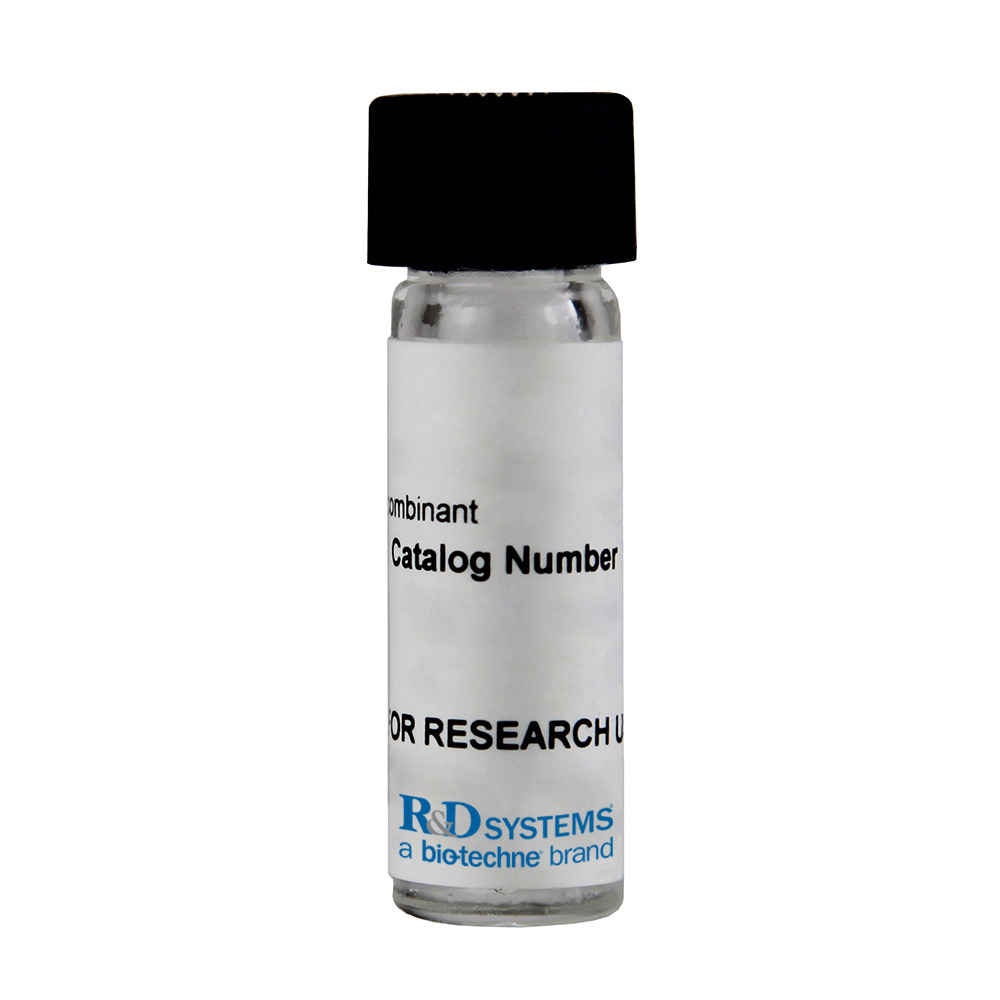Recombinant Human FCRL3/FcRH3 Protein, CF
R&D Systems, part of Bio-Techne | Catalog # 3126-FC


Key Product Details
Product Specifications
Source
Arg14-Arg569, with a C-terminal 6-His tag
Purity
Endotoxin Level
N-terminal Sequence Analysis
Predicted Molecular Mass
SDS-PAGE
Activity
Reviewed Applications
Read 2 reviews rated 5 using 3126-FC in the following applications:
Formulation, Preparation and Storage
3126-FC
| Formulation | Lyophilized from a 0.2 μm filtered solution in PBS. |
| Reconstitution | Reconstitute at 100 μg/mL in sterile PBS. |
| Shipping | The product is shipped at ambient temperature. Upon receipt, store it immediately at the temperature recommended below. |
| Stability & Storage | Use a manual defrost freezer and avoid repeated freeze-thaw cycles.
|
Background: FCRL3/FcRH3
FCRL3 (Fc Receptor-Like 3), also known as FcRH3, IRTA3, and SPAP2, is a 110 kDa molecule with sequence homology to classical Fc receptors. The type 1 transmembrane FCRL proteins contain from three to nine immunoglobulin-like domains. They are differentially expressed within the B cell lineage and can either promote or inhibit B cell proliferation and activation (1). Mature human FCRL3 consists of a 556 amino acid (aa) extracellular domain (ECD) with six Ig-like domains, a 21 aa transmembrane segment, and a 140 aa cytoplasmic domain with four immunotyrosine inhibitory motifs (ITIMs) (2 - 4). Within the ECD, human and mouse FCRL3 share 35% aa sequence identity. Alternate splicing generates several additional isoforms with deletions or substitutions in both the extracellular and intracellular regions. These include potentially secreted forms that are truncated following the second Ig-like domain (4). FCRL3 is expressed in secondary lymphoid organs on the surface of mature naïve and memory B cells, NK cells, and B cell lines derived from chronic lymphocytic leukemias (2, 3, 5). It is upregulated on B cells following LPS or anti-CD40 stimulation (6). A polymorphism in the FCRL3 promoter induces enhanced transcription and is associated with the development of autoimmune disorders in a Japanese population (6, 7). Tyrosine phosphorylation within the ITIMs of FCRL3 enables its association with SHP-1 (4).
References
- Davis, R.S. (2007) Annu. Rev. Immunol. 25:525.
- Miller, I. et al. (2002) Blood, 99:2662.
- Davis, R.S. et al. (2001) Proc. Natl. Acad. Sci. 98:9772.
- Xu, M.-J. et al. (2002) Biochem. Biophys. Res. Commun. 293:1037.
- Polson, A.G. et al. (2006) Int. Immunol. 18:1363.
- Kochi, Y. et al. (2005) Nat. Genet. 37:478.
- Chistiakov, D.A. and A.P. Chistiakov (2007) Hum. Immunol. 68:375.
Long Name
Alternate Names
Gene Symbol
UniProt
Additional FCRL3/FcRH3 Products
Product Documents for Recombinant Human FCRL3/FcRH3 Protein, CF
Product Specific Notices for Recombinant Human FCRL3/FcRH3 Protein, CF
For research use only